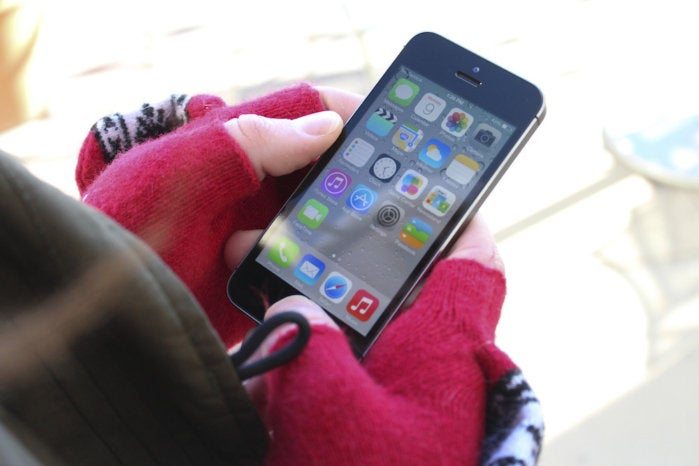There’s been a lot of talk about Touch ID troubles in the news lately. Ars Technica’s Christina Bonnington wrote an excellent explainer about the iPhone 5s’s sensor itself, along with some typical issues users might run into over time, while engineer and pundit Dr. Drang wonders if your recorded fingerprint data might decay after a few months of misreads, given that the Touch ID sensor is continually trying to improve the information it has on your fingerprint.
Touch ID certainly isn’t perfect: As someone who’s been using it since I picked up my iPhone 5s on launch day, I’ve had my fair share of frustration—especially because I swapped out my simple 4-digit passcode with a multi-character alphanumeric version.
But despite its occasional malfunctions, Touch ID has become one of my favorite features on the iPhone. To make sure it stays one of yours, too, here are a few tips and tricks I’ve found to keep Touch ID working properly, as well as some advice about when you shouldn’t use it at all.
Start with a good scan
In the days after I first offered up my prints to Touch ID, I found myself wondering if my fingers simply weren’t cut out for this whole biometric scanning thing: I would frequently have to scan my thumb two or three times to get the phone to unlock. It usually got it by the third try, so I figured the problem was my inexperience with the new technology. But as the weeks wore on, I ended up having to manually type in my code half of the time—enough that I got fed up.
Adjust your grip: When I went to rescan my prints, I had a realization: I had previously scanned my thumb straight up, with my nail pointing toward the top of the iPhone, but I rarely hold my device that way. Instead, I point my thumbs at a 45-to-90-degree angle when gripping my phone.
This time when I scanned, I carefully avoided putting the iPhone flat on a table and scanning my thumb like I was being fingerprinted. Instead, I tried to replicate how I actually hold my phone. This completely changed the experience of Touch ID for me. After a week of using the new saved print, I’ve encountered fewer than ten errors—a good deal better than my previous experience.
This might be the only piece of scanning advice you need, but if you find you’re still having difficulty, there are other options.
Scan in multiple fingerprint angles: Touch ID stores up to five prints, and given that my 5s is mine and mine alone, I’ve used those print stores to actually capture multiple versions of my thumbprints—each has been scanned once when angled at 60 degrees, and once while pointing straight up. It ensures that even if your grip is a little different, Touch ID should still recognize your thumb.
Use a different finger: If you have a mark or cut on your thumb that makes fingerprint analysis and reading difficult, you may have to retire that finger from Touch ID use and instead try one of your other digits.
Make sure your finger touches the metal ring: The steel ring around your Touch ID sensor isn’t just there for looks—it helps the scanner recognize your print. As such, if you don’t make contact with it when you try to open your phone, you may have some trouble.
When Touch ID doesn’t work
Even if Apple’s fingerprint sensor works 90 percent of the time for you, that probably just makes it all the more frustrating when it doesn’t. Here are a few situations where Touch ID may be less effective than your good old passcode.
When it’s cold outside: Are you finding that your iPhone doesn’t really like your touch when you’re cold? Touch ID’s technology may be to blame: When checking your finger against stored information, the sensor scans both your fingerprint and the underlying layer of skin, called your subdermis.
In order to do this, the sensor looks to see if your finger can conduct electricity and heat. (Yes, this means that a supervillain cannot chop off your finger and then use it to access the top secret information on your gadgets.) If your digits have been out in the cold, however, they’ll register as less conductive on the scanner, and that may prevent Touch ID from letting you in.
When your fingers (or phone) are wet: While we as a society may have given up on the concept of not using your devices in the bathroom, it turns out that your iPhone still has some decorum. If you try to use Touch ID while your fingers are damp or after you’ve recently been in the shower, the sensor often won’t recognize your print—either because the water residue is interfering with the scan or your finger has absorbed too much water, giving you “raisin fingers” (and a slightly different-looking print than the recorded data on your phone).
When you trigger security overrides: You won’t be able to unlock your phone with Touch ID if you fail a thumb scan more than five times, if you restart your device, if you haven’t unlocked it in more than 48 hours, or if you need to access the Touch ID & Passcode setting. This hindrance is actually designed for your security. It prevents would-be thieves from getting into your device by repeatedly trying to spoof your fingerprint (or add in a new one without your permission).
When the sensor is dirty: Like any scanner that’s regularly exposed to the elements, your Touch ID sensor may occasionally pick up dust, dirt, and other unwanted particles. According to this support document from Apple, a clean lint-free cloth should take care of most junk; if you find yourself unable to clean your sensor, though, you may have to take it to the Apple Store and see if it’s been permanently damaged in some way.





